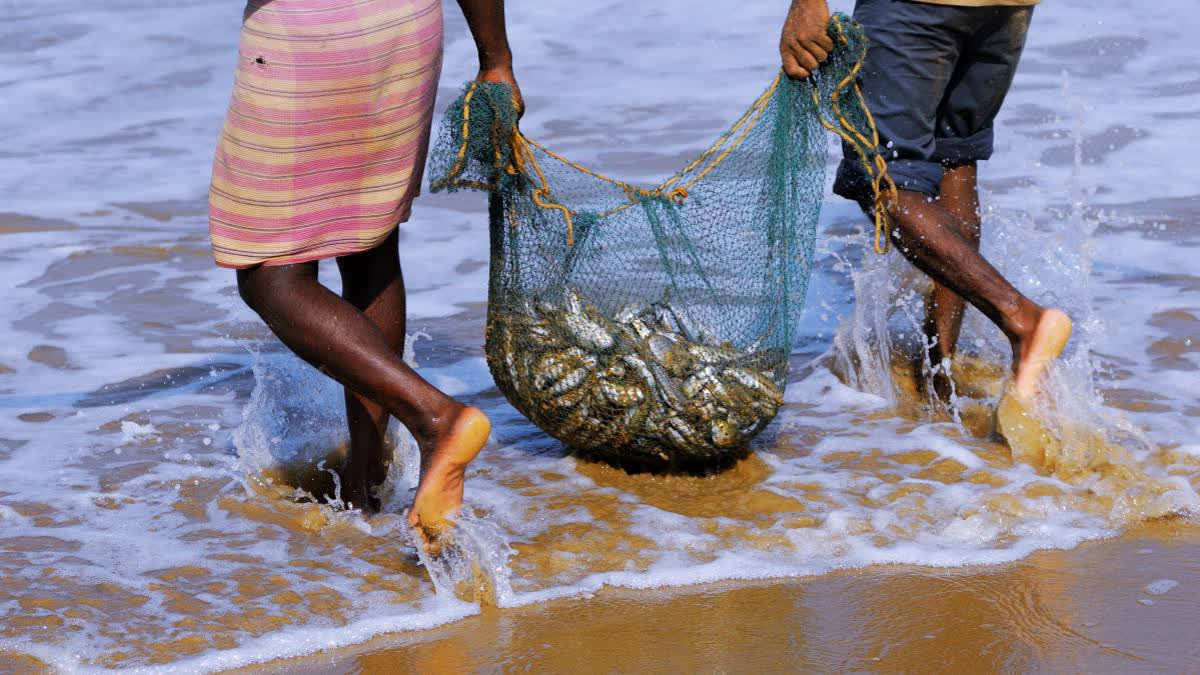To highlight the importance of sustainable stocks of fisheries in the world and strengthen human rights for the small-scale fishing communities World Fisheries Day is celebrated across the world on November 21 annually. It aims to draw attention to overfishing, habitat destruction and other serious threats to the sustainability of marine and freshwater resources.
History:
The celebrations started in 1997 when “World Forum of Fish Harvesters & Fish Workers” met at New Delhi leading to formation of “World Fisheries Forum” with representatives from 18 countries and signed a declaration advocating for a global mandate of sustainable fishing practices and policies.
Significance of the Day: The World Fisheries Day helps in highlighting the critical importance to human lives, of water and the lives it sustains, both in and out of water. Water forms a continuum, whether contained in rivers, lakes, and ocean. 25% of the world’s dietary protein is provided by fish and around 200 million people are directly or indirectly employed in the Fishing industry. Keeping our oceans healthy to sustain fisheries is crucial for our future and the world’s food and livelihoods.
About Fisheries Sector: Fishing is the capture of aquatic organisms in marine, coastal and inland areas. Marine and inland fisheries, together with aquaculture, provide food, nutrition and a source of income to around 820 million people around the world, from harvesting, processing, marketing and distribution.
India in Fisheries: India is the 3rd largest fish producing and 2nd largest aquaculture nation in the world after China. The Blue Revolution in India demonstrated importance of Fisheries and Aquaculture sector. With 8% share in global fish production India is the largest shrimp producer and 4th largest seafood exporter in the world.
The sector is key in providing sustainable incomes and livelihoods to 3 crore fishers and fish farmers in the country. India aims to achieve a target of producing 22 million metric tonnes of fish by 2024-25. Fisheries of India can be broadly classified into two types namely, marine fisheries and inland fisheries. The output of fishing and aquaculture sub-sector increased steadily from about ₹80 thousand crore in 2011-12 to about ₹195 thousand crore in 2022-23.
Andhra Pradesh is the largest producer of fishing and aquaculture during the period 2015-16 to 2022-23 and, its share in all-India output increased from 17.7% in 2011-12 to almost 40.9% in 2022-23.
Growth of Inland aquaculture in India: Till 2000, marine fish production dominated India’s total fish production. However due to practice of science-based fisheries, Inland fisheries in India has seen a turnaround and presently contributes ~70 % of total fish production.
Types of Inland Fisheries in India:
- Tanks and Ponds
- Brackish and Saline Aquaculture
- Cold Water Fisheries
- Ornamental Fisheries
- Cage Culture in Reservoirs
- Riverine Fisheries
- Natural Wetlands
Challenges for Fisheries sector:
• Overfishing and Depleted Fish Stocks- Overfishing refers to the excessive harvesting of fish from a specific body of water, surpassing the sustainable levels that allow fish populations to replenish and maintain their natural balance. This problem has become even more serious due to the increasing global demand for seafood. Overfishing also disrupts the balance of marine ecosystems. Fish populations play crucial roles in maintaining the health of oceans by controlling prey species and promoting biodiversity.
• Habitat Destruction- Habitat destruction in the fisheries sector often results from activities like coastal development, bottom trawling and the use of destructive fishing practices. These practices harm critical marine habitats such as coral reefs, seagrass beds and mangrove forests. The destruction of these habitats also reduces fish breeding and nursery areas.
• Climate Change: Climate change is altering the dynamics of the world’s oceans in ways that profoundly affect fisheries. Due to rising ocean temperatures, fish move to new areas in search of suitable temperatures and cause occurrence of alien species in that area. This can disrupt established fishing patterns, leading to uncertainty for fishers who rely on predictable fish movements.
Ocean acidification, caused by increased carbon dioxide absorption by the oceans, affects the ability of marine organisms to build calcium carbonate shells and skeletons. This can harm species like molluscs and corals, with potential ripple effects throughout the food chain.
• Pollution: Pollution in the fisheries sector is a multifaceted problem encompassing various forms of contamination, including chemical pollutants, nutrient runoff, plastic debris and other contaminants. The increasing availability of pollutants in aquatic ecosystems has raised concerns about the potential impact on food security and diversity of aquatic life. Even the most important and productive coral reef ecosystems, which sustain a diverse range of marine animals and provide essential ecosystem services to humans, are increasingly being impacted and destroyed.
Major Schemes for the Fisheries Sector in India:
• Pradhan Mantri Matsya Sampada Yojana
• National Scheme Of Welfare Of Fishermen



